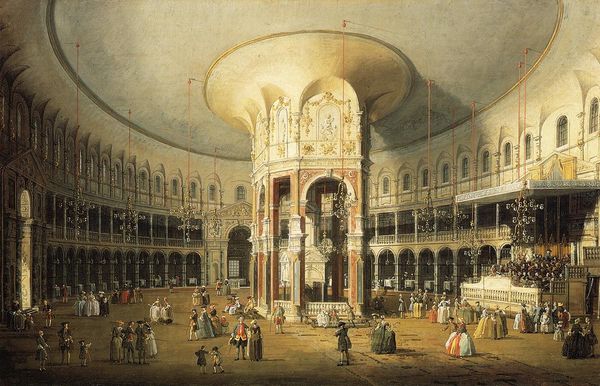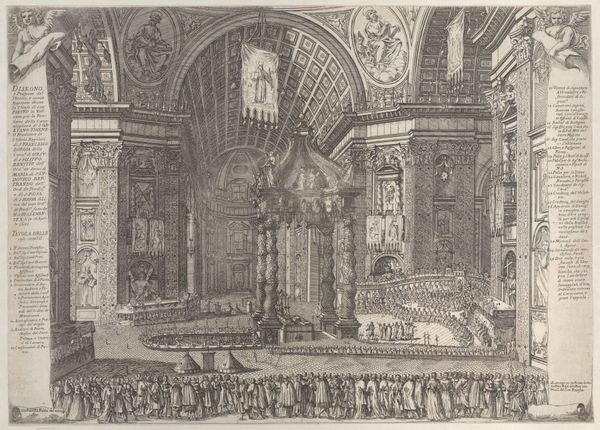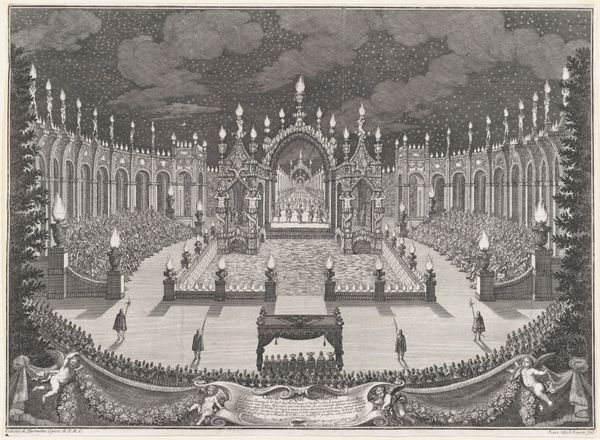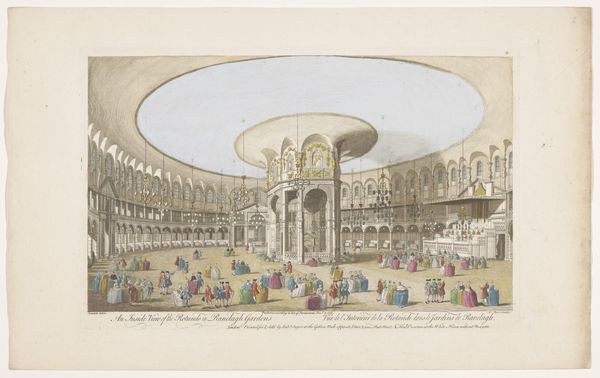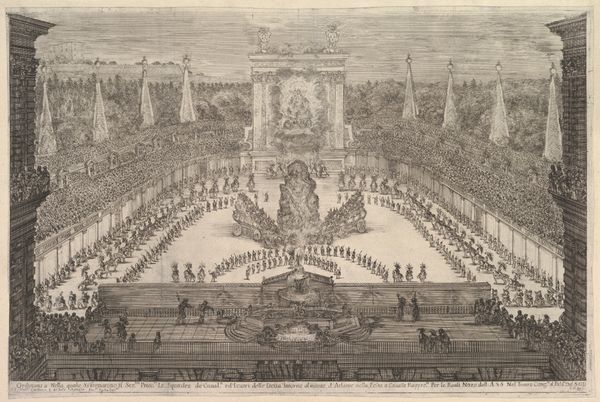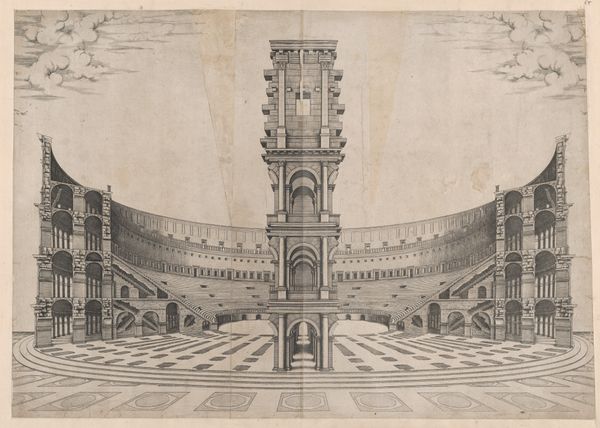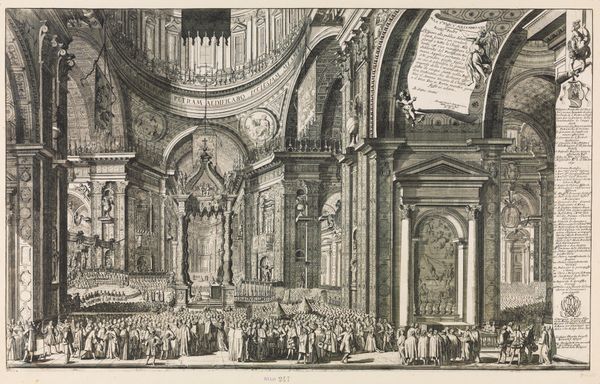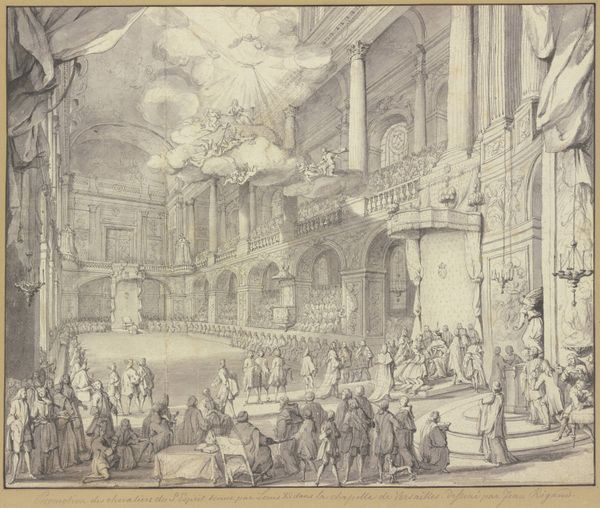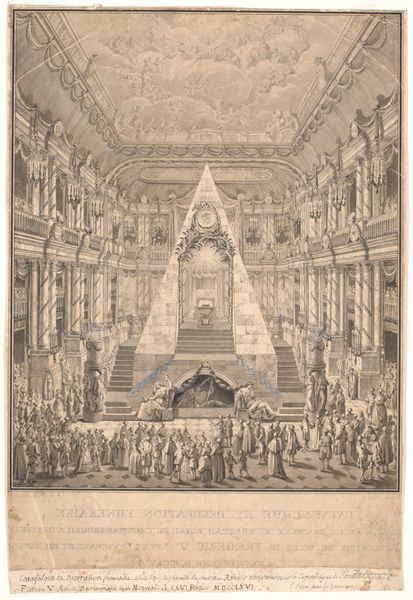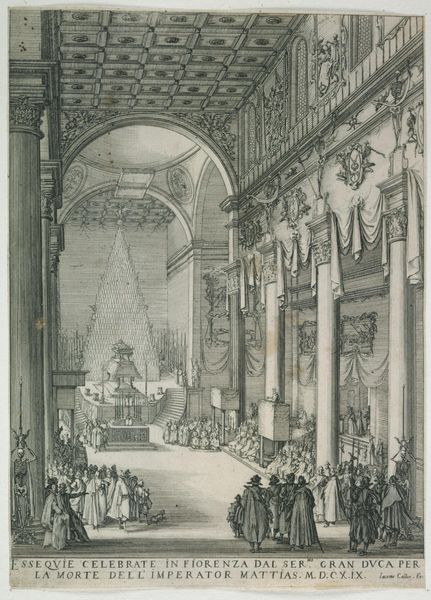
drawing, print, etching, paper, architecture
#
drawing
#
baroque
# print
#
etching
#
landscape
#
paper
#
architecture
Editor: So, this etching from 1751 by Nathaniel Parr is titled "Interior of the Rotunda in Ranelagh Gardens." I’m immediately struck by the incredible detail in what seems like a really vast interior space. It’s made on paper, probably with a copper plate for the etching itself. What are your initial thoughts on this print? Curator: Well, considering it from a materialist perspective, think about the paper itself. Where did it come from? The process of paper-making in the 18th century was highly laborious. Then consider the copperplate etching. The labor involved in creating the plate, the specialized knowledge, the accessibility of prints to a burgeoning middle class... that’s where the real story lies. Editor: So, it's not just about the beautiful architecture, but also the means by which this image came into being? Curator: Exactly. Look at the scene itself: it depicts a leisure space, Ranelagh Gardens. How does the availability of mass-produced images like this, compare to the experience of being *in* that leisure space? Does the print democratize access to the gardens or simply become another commodity, feeding a cycle of consumption and display? Editor: That's a completely different lens. I hadn’t considered how the print itself is also a commodity being consumed. Do you think Parr's choice of etching has any significance here, in terms of affordability and wider consumption? Curator: Absolutely. Etching allowed for relatively quick and cheap reproduction. It fueled the demand for images of fashionable spaces and activities. It provided a visual language, that then shaped social expectations, of both producers and consumers, reinforcing those boundaries and, to a certain extent, re-shaping labor hierarchies of the time. Editor: I see! It's like the artwork's physical creation and circulation are just as important as the scene it depicts. Thanks for shedding light on the socio-economic contexts informing not just the art but its consumption too! Curator: My pleasure. Considering these prints not as mere images, but as products of labor within specific economic systems, helps us understand their full historical weight.
Comments
No comments
Be the first to comment and join the conversation on the ultimate creative platform.
